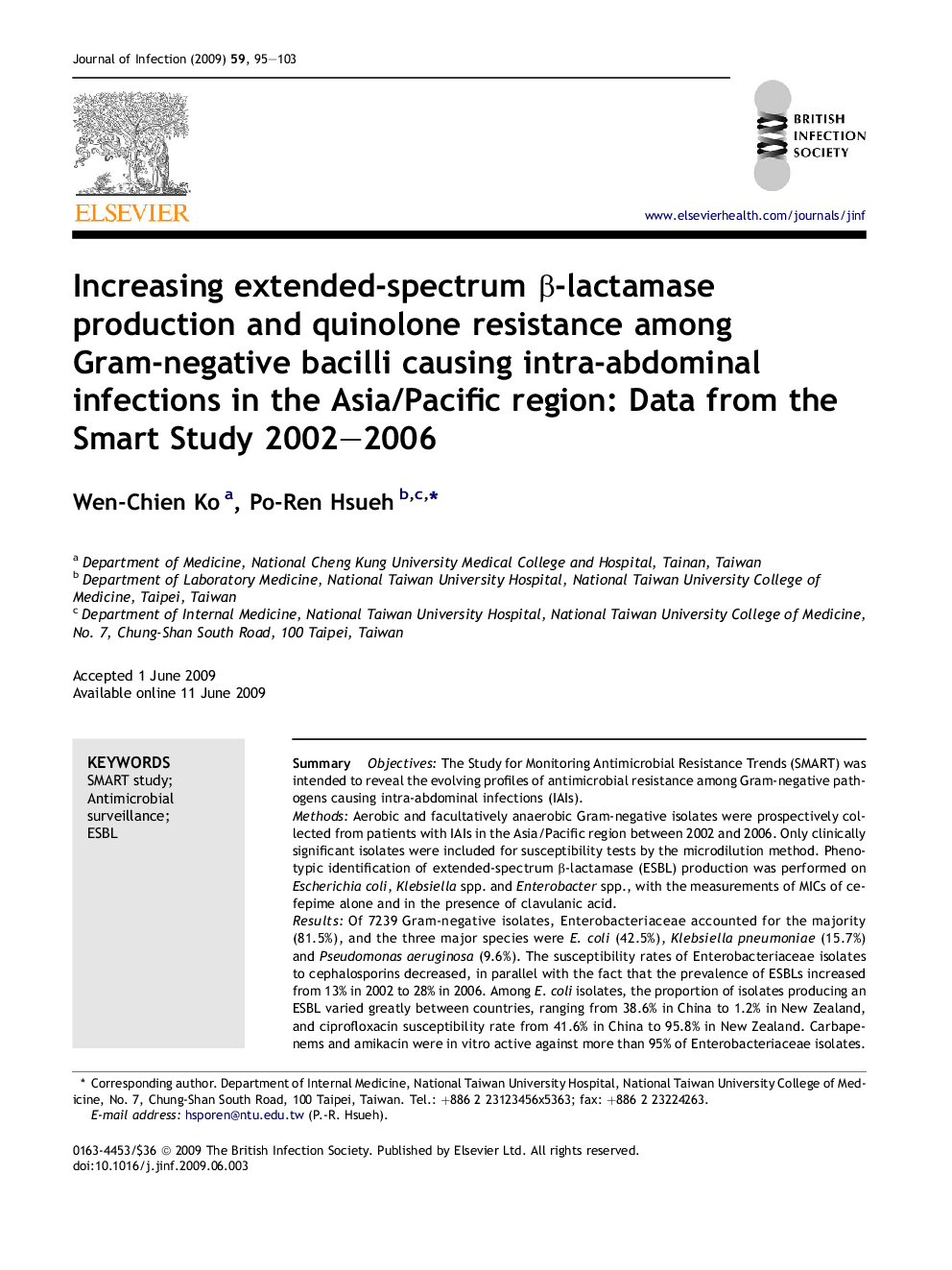| کد مقاله | کد نشریه | سال انتشار | مقاله انگلیسی | نسخه تمام متن |
|---|---|---|---|---|
| 3375770 | 1219697 | 2009 | 9 صفحه PDF | دانلود رایگان |

SummaryObjectivesThe Study for Monitoring Antimicrobial Resistance Trends (SMART) was intended to reveal the evolving profiles of antimicrobial resistance among Gram-negative pathogens causing intra-abdominal infections (IAIs).MethodsAerobic and facultatively anaerobic Gram-negative isolates were prospectively collected from patients with IAIs in the Asia/Pacific region between 2002 and 2006. Only clinically significant isolates were included for susceptibility tests by the microdilution method. Phenotypic identification of extended-spectrum β-lactamase (ESBL) production was performed on Escherichia coli, Klebsiella spp. and Enterobacter spp., with the measurements of MICs of cefepime alone and in the presence of clavulanic acid.ResultsOf 7239 Gram-negative isolates, Enterobacteriaceae accounted for the majority (81.5%), and the three major species were E. coli (42.5%), Klebsiella pneumoniae (15.7%) and Pseudomonas aeruginosa (9.6%). The susceptibility rates of Enterobacteriaceae isolates to cephalosporins decreased, in parallel with the fact that the prevalence of ESBLs increased from 13% in 2002 to 28% in 2006. Among E. coli isolates, the proportion of isolates producing an ESBL varied greatly between countries, ranging from 38.6% in China to 1.2% in New Zealand, and ciprofloxacin susceptibility rate from 41.6% in China to 95.8% in New Zealand. Carbapenems and amikacin were in vitro active against more than 95% of Enterobacteriaceae isolates.ConclusionsAntimicrobial resistance was frequently present among Gram-negative isolates from IAIs in the Asia/Pacific region. During the study period, there were increasing resistant rates of E. coli isolates to cephalosporins, but wide variations existed among countries. Regular updates of treatment guidelines for this region are necessary for empiric antimicrobial therapy.
Journal: Journal of Infection - Volume 59, Issue 2, August 2009, Pages 95–103